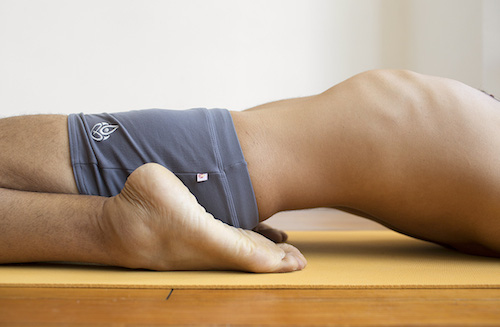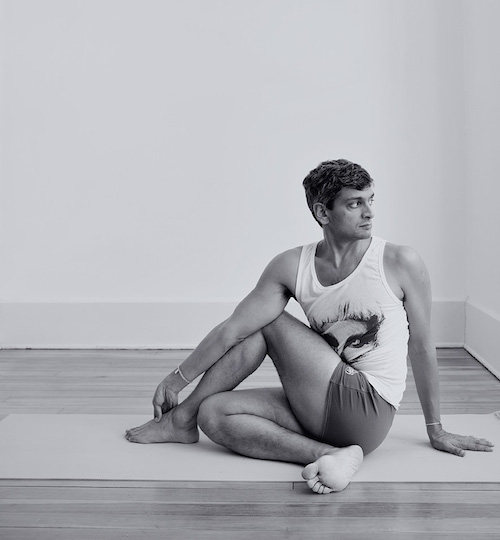There are Crystals in Stone and Pressure in Snow So Are Snow and Stone the Same
BY Kazim Ali

As snow falls again thickly out the window I wonder twice. First that it is a wonder at all that it snows in the winter, so quickly and fully have I adjusted to the new reality of climate change, though that it should have snowed so well in early November so far south from cold Jenpeg where I grew up ought to have been cause for additional concern.
But second that snow is the system. Like the streaks of Matrix code running vertically down the littlest programmer Mouse’s screen, inside snow—its physical structure, its chemical makeup, its origins in metamorphosis, its passage from sky to ground—is the story of all stellar creation.
You might have to love that. At any rate it puts me in the mind of one of my favorite days—in kindergarten, in Jenpeg, being given a little blue square of felt by the teacher we all dressed again in our snow-suits and moon-boots, donned scarves, gloves and hats and trooped outside into the recess field, where Remembrance Day ceremonies and town gatherings were also held. As the snow fell thickly down we held our blue squares aloft to catch a flake or two three. Suspended there, caught in the thick felt weave we could—if we were careful and did not breathe directly on them—observe the full crystal structure of the flakes.
And so I grew up to be a poet and a thinker about poetry.
The body is a system, too, of course. All my glorious yoga teachers—more than one of whom is a writer also—have been teaching me that in the body and breath. Take one of my favorite poses—supta virasana, or “reclining hero’s pose.” From a hands and knees position, draw the knees to touch and separate the lower legs, turning the tops of feet flat on the ground and straight back. With the hands, roll the calves out and then sit back in the space between the feet.
It’s hard to do. You might have put a cushion or padding between the feet and sit on that. There’s three things happening at once: 1) the quadriceps are stretched long. Keep those knees together. 2) the front of the ankle stretches. Keep the toes pointing straight back. 3) the lower back and core are strengthened. Pull the stomach in and up and sit up tall, broadening both the collar bone area and the upper back at once.
What I love is how—as BKS Iyengar used to say—the asana happens in the whole body at once. There’s not one part of it that isn’t concentrating even though several oppositional movements are happening at once.
And now lie back bringing the upper back to the ground and stretching the arms over head. I’m in heaven now just writing about it. “Earth will not let go our foot / except in her sea cup she lets us float,” writes May Swenson, and I feel just as held in a yoga asana, the harder it is the better. The practice of yoga, like the writing of a poem, is a necessarily moving deeper into the difficult regions of the physical. In fact, it is a traveling up to the nation of failure and a dwelling there.
It is even better, one teacher told me, when you come face to face with your ego there: “Why aren’t I good enough to write this poem? Why aren’t I strong enough to balance in this pose?” Dwell in the failure and feel the sense of separation evaporate. “Burning up the ego in the fire of the Self,” she called it. Swenson believed it. Her poems are so intensely physical, the subjects and the language. It was as if the poetic line was body that was trying to breathe itself into a further contortion.
Here she is in a poem called “MAsterMANANiMAl”:
ANiMAte MANANiMAl Mattress of Nerves
MANipulAtor Motor And Motive Maker
MAMMAliAN Matrix Mat of rivers red
MortAl MANic Morsel Mover shaker
Language is snow in sky falling down, language is a geography itself, and Swenson knows: geography is no permanence but a shifting metamorphoses of stone, itself as exactly crystal and tender as snow but with a much longer timeline for the change. Snow evaporates instantly under breath and stone just as thoroughly but in an instant whose relationship to our own perceptual capabilities is slightly different.
That might be one reason I find myself first in New York then in Jerusalem, dizzy with altitude sickness driving out of the mountains from Laramie to Boulder, or leaving the plains of Dehra Dun for the precariously teetering car journey up into the Himalayan foothills.
I can’t see unless I see differently. A curse or a gift, no one can say. Likely both.
There’s a whole genre, it seems, of poets who agree, and follow Basho, travelling his “narrow road” to the North. And why is it that we leave our own homes so quickly and even in our own homes prefer to seek experiences outside the realm of our own bodies? Steve Abbott, in his take on Basho called Skinny Trip to a Far Place, writes on Day Ten of that poetic diary:
The train starts outside my window at five a.m. It’s probably the beginning of a solipsistic novel, but no, it’s just another haiku:
Traffic below on Sanjo-dori
waves of memory—like vacuum
cleaner sound when I was 3.To think, took ten days to notice. But it’s starting to rain and the poem says nothing of this.
Abbott notices here, not just that even when one is paying attention one isn’t paying attention, but that the poem in its traditional lyric form cannot hope to encompass the myriad directions of attention of a life when it is actually lived.
After all, the faintly right-wing slogan that Hollywood tacked on to their film adaptation of the Populist-inflected book Wizard of Oz might only read “There’s no place like home,” for comfortable mainstream heteronormative individual bodies. For everyone else it might better be put, “There’s no place that’s home.”
Rather than a “sequence” of poems that progress from one to another, Basho’s diary—and the projects that have descended from it, like Abbott’s Skinny Trip to a Far Place—is multivalent, polyvocal, multi-genre, but more than that it is quotidian, which means two things: 1) it concerns itself not with high moments but with ordinary life as it happens, and 2) perhaps more importantly, its structure, like this blog itself is one which unfolds day by day, returning to themes every once in a while or perhaps bringing something up only once and dropping it, never to hear from it again.
It took Basho to give it to us, but it was seven hundred years earlier, give or take, that women in Japan invented interactive quotidian literature in the form of the soap opera (Murasaki Shikibu) and the blog (Sei Shonagon). Before there was any Game of Thrones there was the Imperial Palace of the Suzaku Emperor. You think Cersei Lannister is evil? You need to meet the Rokujo Lady. She’ll kill you in your dreams without even breaking a sweat.
When I was in the ancient stone city of Mahabalipuram, some hours south of Chennai along the Tamil coast, I saw not only the Shore Temple—whose mythic six sister temples where revealed to be real when the tsunami of 2004 caused the ocean to recede revealing the rubble and ruins of the temples, submerged for more than a thousand years—but also countless temples carved into the monstrous boulders scattered around the town.
Just behind the magnificent façade of “Arjuna’s Penance,” I found a small complex of temples whose primary design motif was a pattern of double-helices. Of course I immediately started concocting science fiction about how the ancient Gupta sculptors came to understand DNA as the building block of human life. Speculation aside, the spiral does represent how a human perceives time and space—a little bit at a time, always doubling back, moving forward, living in the past and the future and the present at once.
In the physiology of yoga these spirals exist in the human body’s energetic network as well—in postures we sometimes imitate this spiraling action as well. In the seated spinal twist, one must ground one sitting bone firmly to the ground at the same time as turning the upper body in the other direction. One arm presses itself against the upright knee while the other arm presses into the ground behind you. For every action there in equal and opposite reaction say both the physical laws of the universe and the law of karma in the ancient Vedantic texts.
The spine twists and we breathe deeply, sitting up tall, grounding down, living in both realities at once.

Poet, editor, and prose writer Kazim Ali was born in the United Kingdom to Muslim parents of Indian ...
Read Full Biography

